BLM graffiti on a looted Target store on Lake Street, Minneapolis the morning of May 28, 2020 © Wikimedia/Lorie Shaull
How a US campus fashion to obliterate from history those its followers don’t like is now spreading to Europe
The world – at least, the Western world – is deeply divided between those who claim to be “woke” and those who prefer to snuggle under the covers and hurl the alarm clock at the wall. According to many experts in the arts disciplines, both are wrong.
Take the case of Tim Parker, who resigned in May as President of Britain’s National Trust, an organisation devoted to protecting, restoring and looking after the country’s heritage. Parker could perhaps be described as “woke” because of his plans to ensure that in cases where the fine houses and treasures the charity looks after owe their origins to the slave trade or colonialism, the visiting public should be alerted to the fact. During Parker’s seven-year term of office, however, he faced constant political interference from the British government, whose ministers would prefer to draw a veil over the UK’s less honourable past actions.

Parker’s resignation came after a motion was put expressing ‘distrust of his leadership’, although it attracted only 1% of the vote of a membership he’d helped to boost from 4.2-million in 2014 to 6-million by the time the pandemic began. UK government ministers, it seems, would rather the heritage industry ignored embarrassing things like colonialism, the misappropriation of foreign riches (the Elgin Marbles spring to mind but there have been many others) or Britain’s rôle in the slave trade. Disturbingly, it would appear that some government ministers would rather dive under the covers and throw the alarm clock away. Yet many of them went to expensive schools and must have learned history, as well as the classics, one assumes.
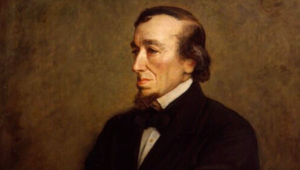
The 19th century British Conservative Prime Minister, Benjamin Disraeli, was a firm believer that no topic should be taboo; knowledge was what mattered. In a speech to Parliament in 1873 he said: “A university should be a place of light, of liberty, and of learning”.
On the other hand, the “woke” movement could see learning in some fields curtailed and the study of classics ending altogether. According to New Europe’s website, a high school teacher in Massachusetts, Heather Levine, has boasted on social media that she was “very proud” to have got The Iliad and The Odyssey removed from the school’s curriculum because of the attitudes of the supposed heroes, like Agamemnon, Menelaus, Odysseus and the Trojan King Priam.

They may have been dead for some 4,000 years in some estimates, if indeed they ever existed at all as historical figures, but the teacher said she feared that they could still “poison” her students by their cruelty, Western-imperialist attitudes, sexism and so on. Perhaps she assumes (as few experts on bronze-age history have done) that Homer’s characters were real. Or, indeed, that Homer was. We’ll never know; when asked by the Wall Street Journal to explain her campaign she replied that she found the question “invasive”.
There is a very interesting book arguing that everyone should study Homer because apart from containing brilliant poetry, created before the arrival of writing in Greece, it also carries a message for us today. The book is called ‘The Mighty Dead – why Homer matters’ by Adam Nicholson (the 4,000 year estimate is his). He mentions a series of arty dinners held at Le Repas Magny in Paris in 1863, at which the most brilliant litterateurs of the age sat, ate, smoked and argued about books, mainly the classics. One of the diners was the notoriously waspish writer Jules de Goncourt, who was doomed to die of syphilis six years later at the age of 39. He grew angry when asked by the traditionalist poet Comte de Saint-Victor why he kept mentioning Homer. At least he didn’t say the question was ‘invasive’. According to Nicholson, the reply came from the Breton philosopher Théophile : “Most people read Homer in those stupid eighteenth-century translations.
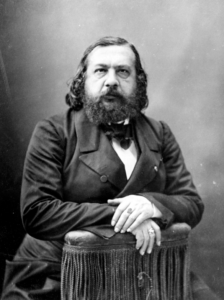
They make him sound like Marie-Antoinette nibbling biscuits in the Tuileries,” Gautier began, “But if you read him in Greek, you can see he’s a monster, his people are monsters. The whole thing is like a dinner party for barbarians. They eat with their fingers. They put mud in their hair when they are upset. They spend half the time painting themselves.” The dinner ended, not unusually, it seems, with a stand-up fight and the waiter ordered them all out. It was just another typical literary and artistic evening on the Left Bank of the 6th Arrondisement in the 19th century. The exchange of words was transcribed later by de Goncourt and thus quoted by Nicholson. And now by me, too.
FASHION AND FANCY
All ways of thinking have their fashions, even physics, as the prominent mathematical physicist Sir Roger Penrose points out in his astounding book, ‘Fashion, Faith and Fantasy’. In classical times, there was the belief in ‘Platonic solids’, such as Greece’s ‘five elements’, each with its own ‘shape’: fire (a tetrahedron), air (an octahedron), water (an icosahedron) and aether (a dodecahedron). Now we no longer think aether exists, although nothing in physics is set in stone. The Greek astronomers’ theory of planetary motion, which was terribly complex with its reliance on ‘epicycles’(to explain the planets’ changes in direction), was believed for centuries before being upset by the ideas of Ptolemy and Galileo. Then along came Kepler, Newton and, of course, Einstein. Now we have string theory, which has its firm disciples and its equally firm sceptics. Who knows what tomorrow will bring if even Penrose doesn’t? Philosophy certainly has its fashions, too, of course.

Follow the ‘woke’ path chosen by Ms. Levine a little further and one could, perhaps, be obliged to ban the teaching of history altogether and certainly of the bronze age. Human beings are not and seldom have been “nice”, which may explain the absence of Neanderthals and Denisovans today. You would probably have to forget the French Revolution, too, and anything about the Roman Empire and the way in which uppity slaves were punished outside the city walls by being crucified. Even the Roman citizens were fairly horrified by the notion of torturing someone to death in that way, variously attributing the origin of the practice to the Carthaginians, the Seleucid Empire or the Parthians, rather than admitting that Rome started it. Logically, that would also entail banning Christianity, which includes the most famous crucifixion of all. Shakespeare would have to go: think of the blatant sexism of The Merry Wives of Windsor (even though the ladies win in the end) or the still controversial The Taming of the Shrew, about which even Shakespeare seems to have had his doubts, making the main story a “play-within-the-play”, staged for the deception and amusement of the beggar, Sly. Then there is the antisemitism of The Merchant of Venice (including Shakespeare’s subtle anti-antisemitism message) or the blinding of Gloucester in Shakespeare’s magisterial King Lear. You may, then, be restricted to children’s stories among which some students may be troubled by the Brothers Grimm (remember The Robber Bridegroom, with its tale of Murder, decapitation and cannibalism?) and even Hans Christian Anderson (Thumbelina and The Little Mermaid have their dark sides). Logically, you’d be left with precious little more than a syllabus devoted to writers such as Beatrix Potter and L. Frank Baum, unless you find Peter Rabbit (who is a thief, after all) or The Wizard of Oz (a fraud) too disturbing in some way?

Certainly the whole “woke” issue has caused vicious arguments in France, where various intellectuals have engaged with the “woke” movement. France is perhaps more conscious of its own intellectual heritage than many countries, which is what makes a visit to an historic site there rather more pleasant than it is in, for instance, the UK or the United States. The French fear that the whole “woke” movement sees historical civilization as something to be destroyed. The Independent Women’s Forum (IWF) reports on its website that France is fighting back against this fashionable wave of thought. “American intellectuals may be hopping on the woke bandwagon,” it says, “rushing to put up ‘Black Lives Matter’ and ‘Hate Doesn’t Live Here’ signs. Refreshingly, and perhaps surprisingly, prominent French intellectuals are pushing back against the woke ideas emanating from American campuses.”

The article quotes the New York Times, while commenting on its somewhat hysterical tone: “The threat is said to be existential,” the IWF article quotes the NYT as saying. “It fuels secessionism. Gnaws at national unity. Abets Islamism. Attacks France’s intellectual and cultural heritage.” If it’s existential, France should be able to deal with it; after all, it was the French Catholic philosopher Gabriel Marcel who first coined the word ‘existential’ in the 1940s, and others such as Jean-Paul Sartre, Simone de Beauvoir and Albert Camus were disciples.

As it is, reports IWF, “French intellectuals are to be applauded for being more willing to engage in debate than US academics.” The article criticises the smashing of statues, pointing out that many of the perpetrators are often ignorant as to the identity of the person the statue represents or what they did. The writer of the article says it gives her “a glimmer of hope that American intellectuals may follow the French in an awakening from wokeism.” Perhaps Hungary got it right.

Budapest was full of Soviet-era sculptures, such as one of Lenin appearing to usher people towards a factory to work. With Communism gone, they moved the statues to a new site that was named Statue Park (at least, it was when I was last there). Some of the sculptures were excellent and worth saving, some were awful. It was on a street market nearby, though, that my cameraman negotiated for me the purchase of a small bust of Lenin which now adorns my office.
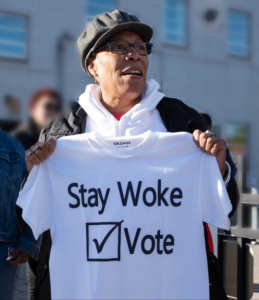
In the landslide ‘woke’ movement, where do you stop? If you start banning the fictional tales of classical writers and information about the age in which they lived, you’d really have to dig a deep hole and sit there, fingers in ears and eyes tightly closed to avoid the fact that we live, as we always have, in a violent, imperfect world where people hold a wide variety of views, which may, indeed, change over time and which, of course, you may not like right now. Think of all the popular on-line games, such as ‘Call of Duty: Warzone’, ‘Fortnite’, or ‘Destiny 2: Shadowkeep’. They are about fighting and killing, so should those be banned, too? I cannot remember ever being taught about Yusuf As’ar Yath’ar, the last Jewish king of the Ḥimyarī region of Arabia. Little is recorded about him, and it is not clear if he had any true claim to the throne. What is known is that he conquered the Ethiopian garrison in Ẓafār (125 km south of San’a) and annihilated the Christian population connected with Aksūm and Byzantium. He was pious but famously (and hideously) cruel, having conquered Nijran and packed the local Christians into a church which he then burned to the ground. Eventually, facing defeat by a Christian army, his final act was to ride his blood-flecked white charger into the Red Sea while wearing full armour. He drowned, and was not, I should think, greatly missed.
CHANGING HORSES IN MIDSTREAM
The fact is that most people go through phases of beliefs, informed perhaps by their parents in their early lives, by their school a little later, by the pleasures and difficulties of meeting members of the opposite sex, then raising a family, and by friends. Take the great French writer Victor Hugo, for instance.

Megan Behrent, writing in International Socialist Review (ISR), describes Hugo as a hero of the left but a very flawed one. “One of his more famous contemporary critics, Paul Lafargue, who was married to Karl Marx’s daughter Laura,” she writes, “argues that it is ultimately as a writer and poet of the bourgeoisie that he distinguishes himself.” In Hugo, Lafargue argues, the bourgeoisie sees ‘one of the most perfect and brilliant personifications of its instincts, passions and thoughts.’ That Hugo was bourgeois is undeniable, but towards the end of his life he wrote to an Italian minister to explain his intentions with his great book, Les Misérables: “Social problems know no borders. The wounds of the human race, those great wounds which cover the globe, do not halt at the red or blue lines traced upon the map. Wherever man is ignorant and despairs, wherever woman is sold for bread, wherever the child suffers for lack of a book to instruct him and a hearth at which to warm him, the book Les Misérables knocks at the door and says: ‘Open to me, I come for you’.”
Hugo’s politics changed drastically throughout his life. “At his best, he espoused a form of left-wing bourgeois republicanism—a hodgepodge of humanism and pacifism with a little socialist mysticism thrown in,” says ISR. “At other times, he was a royalist, imperialist, and counterrevolutionary.” Having been elected to the National Assembly as a conservative, he broke from his party and professed his more liberal views on issues such as social injustice, press freedom and the death penalty, which he always opposed.
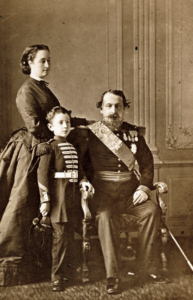
As a result, he was exiled by Napoleon III, who also abolished democracy in France after staging a coup to gain power. Hugo described Napoleon III as “Napoléon le petit” to distinguish him from the more famous Emperor (known as Napoléon le grand) and as an insult to the country’s new leader. Although Hugo and wife stayed together, neither was faithful to the other. In 1831 or thereabouts, Hugo’s wife, Adele, became romantically involved with a well-known critic and good friend of Victor Hugo’s named Charles Sainte-Beuve. It was around the same time that Hugo became involved with the actress Juliette Drouet, who soon became his mistress, giving up a promising stage career. Supported by a small pension from Hugo, Drouet became his unpaid secretary and traveling companion. During their relationship, which lasted for the next fifty years, Drouet wrote him some 20,000 letters, now held at the University of Rouen which, together with the Sorbonne, is trying to transcribe them. They’re very hard to read. Although some doubt hangs over Hugo’s commitment to Socialism, his writings are still revered by left-wing thinkers. “I feel myself the brother of all men and the guest of all peoples,” Hugo famously said. A plaque bearing that quotation is displayed at the Place des Barricades in Brussels, close to one of the places in which he lived. He believed in a “United States of Europe”, which the EU has so far failed to become, despite the dreams of its founders, Jean Monnet and Robert Schuman.

If you look up the word ‘woke’ in my Chambers Dictionary, it simply refers you to its synonym, ‘wake’, defined as “to be or remain awake, or active or vigilant; to keep watch or vigil, or pass the night in prayer; to hold a wake; to be awake or to be aroused from sleep or from indifference, daydreaming, etc.” The word is not to be found at all in my much older Walker’s Dictionary, nor in my Roget’s Thesaurus. Being used as it is for the strange dumbing and blindfolding movement that started on American campuses gives it a new definition, but one so loose that it can mean almost anything. What it mainly seems to mean is intolerance of alternative views. One of the problems is not only the movement’s attempts to stifle debate on some topics, but also the way that it attracts right-wing politicians and commentators to seek ways to legislate against it. If you want to stop someone who refuses to listen, the solution surely isn’t to prevent them from hearing, either. Take Florida, for instance, where there is an attempt to silence some people who seek to silence others.

This is how it was reported on the Forbes website: “Florida Gov. Ron DeSantis signed a bill into law Monday that levies hefty fines on social media companies that ‘deplatform’ political candidates after conservatives widely criticized big tech giants like Facebook and Twitter for purportedly discriminating against them—but experts warn the legislation likely violates private companies’ First Amendment rights.” Incidentally, deplatforming an election candidate for 14 days will theoretically lead to a fine of $250,000 (€204,000). So, there we have another new word: “deplatforming”, which means trying to prevent somebody whose views you don’t like from getting an audience anywhere, either by preventing them from making a public speech or by trying to remove their contributions to social media sites. In Florida’s case, however much the social media platforms are curbed, De Santis is unlikely to silence the journalist and humorous writer Carl Hiaasen from writing scurrilous satires about corruption and graft in Republican-run Florida, his home state. The books are very funny, by the way.
‘Woke’ and ‘deplatforming’ walk hand-in-hand with the ‘cancel culture’, defined on the on-line website ‘Pop Culture by Dictionary.com’, as referring to “the popular practice of withdrawing support for (cancelling) public figures and companies after they have done or said something considered objectionable or offensive. Cancel culture is generally discussed as being performed on social media in the form of group shaming.” In other words, ostracism, or, in the strange English idiom, “being sent to Coventry”. No-one is absolutely certain where that phrase originates, Coventry being a perfectly pleasant town in the English Midlands whose Gothic cathedral was destroyed by Nazi bombs in the 1940s. Journalist Fraser McAlpine has suggested the phrase emanates from a fear of being hanged from a covin tree (a ‘covin’ tree was a traditional meeting or trysting place) outside the city’s castle during the time of Henry III, who reigned from 1327 to 1377, which was a long reign back in those blood-thirsty days.
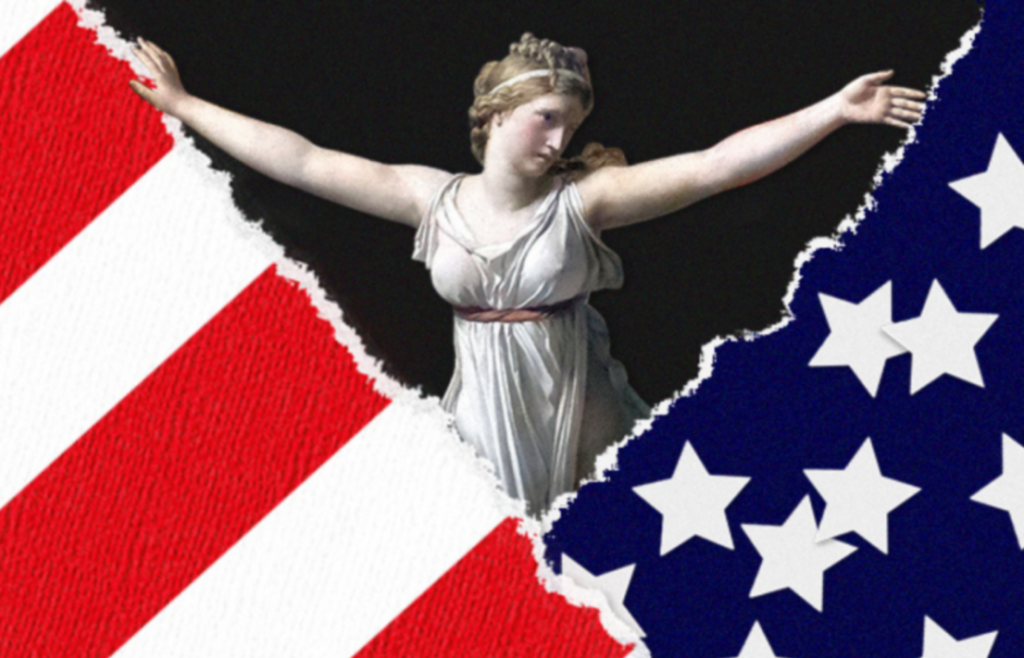
If you were sent to the covin tree, in other words, you didn’t come back. History recalls Henry as a fairly average monarch by the standards of the time, although the Encyclopaedia Britannica notes also that despite being charitable and cultured, “In diplomatic and military affairs he proved to be arrogant yet cowardly, ambitious yet impractical”. Nevertheless, he managed to win the Battle of Evesham against the usurper Henry de Montfort in 1265 at a time when he was described as being “weak and senile”. He probably wasn’t “woke”, however. Even in his dotage he managed to face his enemy with sword in hand, rather than telling everyone just to ignore him. He didn’t march along with a banner reading “down with de Montfort”, either. He probably won’t feature on the curriculum of that Massachusetts school.
HITTING BACK AT THE LONG DEAD
Next, let’s consider the statue-smashing groups, who pull down the statues of those whose beneficence to the places in which the statues are erected was built on their deep involvement with a trade we see tend to deplore. However, the idea that the slavers were doing anything immoral seems never to have crossed their minds. They even recruited churchmen to support the trade on moral grounds.

It may have involved money being paid in return for arguing that Africans were “not really human”. In some American states, it was illegal to teach the slaves to read. South Carolina was the first state to pass such an ordinance in 1740. It said that “having slaves taught to write, or suffering them to be employed in writing may be attended with great inconveniences; be it enacted, that all and every person and persons whatsoever, who shall hereafter teach or cause any slave or slaves to be taught to write, or shall use or employ any slave as a scribe, in any manner of writing whatsoever, hereafter taught to write, every such person or persons shall, for every such offense, forfeit the sum of one hundred pounds, current money.” That was a great deal of cash back then. Slaves were also forbidden to own paper, pens or ink. But those were very different days, long before newspapers, mass communications and the Internet, and it’s even possible that many ordinary citizens would have found the trade and those laws acceptable. After all, their own lives were far from easy.
But some did care, famously. One year into the Civil War in America between the States of the Union and the Confederacy, cotton workers in Lancashire, in North West England, decided to support the victims of slavery by taking the Union side and boycotting the cotton imported from the American South. Many workers in cities like Manchester, known as “Cottonopolis” because it was so central to the trade, faced hardship and hunger through their action, but despite pleas for them to return to work, they refused, even though there were many Confederate flags flying in Liverpool. The North West supplied most of the cotton goods to Europe, so the boycott brought the industry to its knees. President Abraham Lincoln expressed his gratitude for their self-sacrifice in a letter he sent to them in 1863. His words were later inscribed on the pedestal of a statue of him in the appropriately named Lincoln Square in Manchester. The letter, addressed to “the working men of Manchester” spoke of the selfless act of “sublime Christian heroism, which has not been surpassed in any age or in any country”. He also sent ships to bring relief supplies for the starving cotton workers, which the Confederate navy tried to intercept. Even Britain’s industrialists got involved with the anti-slavery movement.
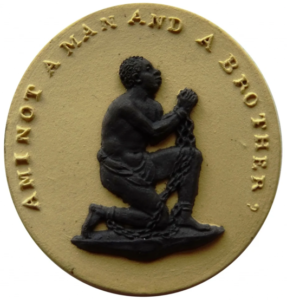
Josiah Wedgwood’s world-famous and very successful potteries issued a medallion, showing a kneeling slave in chains and bearing the slogan of the British abolitionist movement, “Am I not a man and a brother?” It invited people to look at the supplicant figure and think why is he in chains while most people walking the streets of Britain (and the rest of Europe, for that matter) are free? Slavery officially ended in the UK in 1833, with the Abolition of Slavery Act. It set some 800,000 people free but it offered them no way to return home. It had taken Britain a very long time to put right a long-standing wrong, urged on by evangelical Christians like William Wilberforce, and even then, it was somewhat half-heartedly. Between 1662 and 1807 British and British colonial slaver ships had brought an estimated 3,415,500 Africans to the Americas. Of this number, 2,964,800 survived the ‘middle passage’ and were sold into slavery in the Americas (those who died on the way were dumped overboard). Only Spain and Portugal transported more.
Now the issue of race seems to be obsessing the United States. It’s easy to see why: black citizens there are more likely to be poor, to live in deprived areas, and to have inadequate health care. In a statement to the Financial Literacy and Education Commission in late May, America’s Secretary of the Treasury, Janet L. Yellen commented on that poverty: “It was probably because I started studying economics during the Civil Rights Movement. I took my first course around 1963. I was a freshman in college, and if you looked at the economic data back then, the average Black family possessed roughly 15% the wealth of the average white family. That is more than a 6-to-1 difference, and it is stark. But perhaps it isn’t surprising: Jim Crow laws were still in effect in many places. What is surprising, however, is that it’s now more than half a century later, and that 6-to-1 number has barely budged.”
DON’T SHOOT!
There is also a great likelihood for a black person to be shot dead by police. Or, in the case of George Floyd, to be strangled for no obvious reason while already under arrest and in handcuffs. His was not the first life lost through police incompetence, albeit in a country afloat in a sea of military-grade weapons. The very right-wing National Rifle Association argues for even laxer gun laws on the grounds that if enough “good guys” have guns they will be able to defeat the “bad guys”.

This is clearly a nonsense, considering that gun deaths in the United States in 2017 stood at 19,223, compared with 3,993 in the much more heavily populated European Union, a figure which, incidentally, is 63% lower than in 2002 and includes all types of homicides, not just gun deaths. Of the gun deaths in the United States, 60% (25,854) were suicides while 37% (14,542) were murders. The rest were unintentional, involved the police or remain unsolved. That means 3.96 people murdered per 100,000 in Europe in 2017, compared with 12 per 100,000 in the United States. In China, the number is just 0.02 per 100,000. Belgium’s Flemish Peace Institute states on a fact sheet that: “In countries with more firearms, there are usually more deaths by firearms.”
It’s easy to understand why people carry banners with the slogan ‘Black Lives Matter’, but surely ALL lives matter, black certainly, but also brown, white and even green, if we’re ever invaded by aliens. At times it would be good to be colour-blind. The United States is the only country in which laws were passed to ban the teaching of black people in case it overturned the slavery system. Frederick Douglass escaped from slavery in Maryland when he was about 20 (no record was kept of slaves’ birth dates). He continued to educate himself and to fight against slavery in all its wicked forms. He was exceptionally well read and given to quoting Cicero’s speeches. He clearly believed that everybody should have the right to read whatever they wanted. “We have all met a class of men, very remarkable for their activity, and who yet make but little headway in life,” he wrote, “men who, in their noisy and impulsive pursuit of knowledge, never get beyond the outer bark of an idea, from a lack of patience and perseverance to dig to the core; men who begin everything and complete nothing; who see, but do not perceive; who read, but forget what they read, and are as if they had not read; who travel but go nowhere in particular, and have nothing of value to impart when they return.” It seems likely that he, too, would have opposed the ‘woke’ movement.
I can understand why today’s young people (mostly young people, anyway) feel the need to punish the perpetrators of slavery by bringing down their statues. Yes, they deserve dishonour for the frightful suffering they caused, but is smashing up their statues the right answer? You can’t change the past by destroying memorials to those who created it, for good or ill. Many think it would be better to leave the statues in place but to put a plaque on them to explain how these ‘heroes’ gained the money they used for some ‘civic good’ or other. What was the true price in blood?
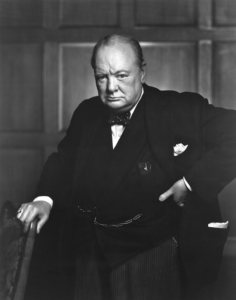
Take the case of Sir Winston Churchill. He is remembered, of course, as Britain’s wartime leader and his gift for speaking undoubtedly stirred and cheered up the British people suffering nightly attacks from fleets of German bombers. He is (inaccurately) attributed with inventing the expression “Iron Curtain” for the 7,000 kilometre boundary between the Europe of the West and the area under the control of Soviet Russia, but is more likely to have come from ‘Apocalypse of Our Time’, by Vasily Rozanov, written in 1918. In this case, the term ‘Iron Curtain’ refers to the legally-enforced fireproof screen drawn across the stage of a German theatre when a performance has ended. “With clanging, creaking, and squeaking, an iron curtain is lowering over Russian History. ‘The performance is over.’ The audience got up. ‘Time to put on your fur coats and go home.’ We looked around, but the fur coats and homes were missing,” the book says. Churchill had a rather chequered career before emerging as a hero of the Second World War which included espousing the use of gas on the “troublesome” tribes of Northern India. And yet a statue of Churchill stands in Parliament Square in London. Before anyone tries to pull it down, perhaps today’s young Britons should be told a little more about a wartime leader who held very right-wing views on most things but was, nevertheless a brilliant wartime leader.
We have to remember what the French writer and philosopher Voltaire wrote in his book, L’Ingénue: “En effet, l’histoire n’est que le tableau des crimes et des malheurs.” (“Indeed, history is nothing more than a tableau of crimes and misfortunes”).” The thing is that we have to know about all those crimes and misfortunes, often the results of our forebears’ mistakes, in order to try and avoid repeating them. After all, if a baby orangutan doesn’t learn from its mother that the lovely (and increasingly rare) clouded leopard is a creature to avoid, it will probably end up as lunch. Being “woke” is fine, as long as it doesn’t harm you (or anybody else’s) education. But although some decry the ‘woke’ movement as leftist, it really isn’t. You can never have too much learning; the early Socialist campaigners set up schools for working people. As Mao Zedong said in a speech in 1957, “Letting a hundred flowers blossom and a hundred schools of thought contend is the policy for promoting progress in the arts and the sciences and a flourishing socialist culture in our land.” Like Frederick Douglass, Mao would surely have hated ‘wokeism’.

